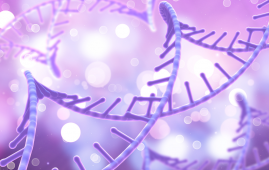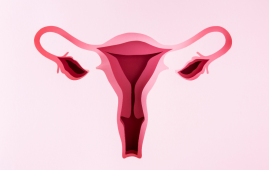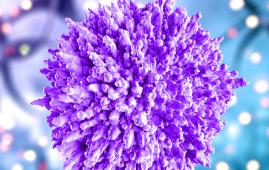

Researchers and clinicians at the Worcester Polytechnic Institute (WPI) and McLean Hospital in Belmont, which is connected with Harvard Medical School, is employing artificial intelligence technologies to more accurately forecast the risk of suicide in women who have certain trauma-related problems. The results of their three-year study, which were recently published in the European Journal of Psycho-traumatology, may provide physicians with a new method for immediately spotting warning indicators and mark a significant advancement in the use of AI to comprehend suicidal self-injury.
The study included information gathered from 123 female patients at McLean Hospital, including 30 controls and 93 with histories of childhood abuse, PTSD, and varied degrees of dissociation. Dmitry Korkin, the Harold L. Jurist ’61 and Heather E. Jurist Dean’s Professor of Computer Science at WPI, Lauren A. M. Lebois, the director of McLean Hospital’s Dissociative Disorders and Trauma Research Program, and Suhas Srinivasan, a doctoral student at WPI, led the assembled team. They created an algorithm that accurately predicted a history of suicide attempts in the patient group and identified subgroups of patients at the greatest risk for suicidal thoughts and behaviour.
The team used a dual strategy. First, it clustered the data obtained from the cohort using cutting-edge AI techniques created by Korkin’s team to check for trends. The scientists used that information, according to Korkin, to identify significant trends in the patient group. These patterns identified a range of dissociative symptoms that were associated with earlier suicide attempts, such as a detachment from one’s self or from their surroundings, usually in response to trauma.
Second, the team developed an algorithm to distinguish between patients with various degrees of dissociation and the 30 healthy control participants in the trial. The team also had success here, as the algorithm correctly predicted earlier suicide attempts among the study participants in 83% of cases by focusing on particular dissociative symptoms as crucial markers.
While dissociative identity disorder (DID) has been understudied and underdiagnosed in general psychiatric practice, it has not yet been taken into consideration in those models, according to Korkin, who noted that AI and machine learning have previously been used to help predict self-injurious and suicidal behaviours. According to him, the study demonstrated the urgent need for physicians to test for dissociative disorder symptoms in order to identify high-risk people, particularly women, who are frequently ignored in studies of suicide since they are statistically less likely than men to attempt suicide. “We’re trying to say that among these hundreds of symptoms and indicators, our results suggest these two or three symptoms may be helpful to focus in on,” Korkin said.
According to Benjamin Nephew, a neuroscientist and professor of biology and biotechnology at WPI who acted as the team’s study coordinator, DID includes a wide spectrum; those affected may display some symptoms but not all. A few of those DID symptoms in the McLean/WPI study were associated with patients who had a history of suicide attempts. This might make it possible for medical professionals to focus more quickly on those signs when determining a patient’s risk of suicide. The study’s findings may eventually speed up the process of referring patients to dissociative disorder specialists and increase understanding of the value of employing dissociative disorder diagnosis and treatments to guide suicide prevention.
“Interventions help with different things,” Nephew said. “Say, for example, you have depression and insomnia. Not everyone who has depression has insomnia, but if you do have insomnia with depression and you focus on that insomnia, it’s very effective at treating the depression.”
Harry Kasparian, a 1973 graduate of WPI, started this ground-breaking project in honor of Julia, his daughter who committed herself in 2016 at the age of 23. With a focus on DID, depression, and suicidality, the Julia Kasparian Fund for Neuroscience Research supports collaborative research between faculty and student neuroscientists, clinicians, and computer scientists at WPI and McLean in order to enhance mental illness prevention, early diagnosis, and treatment.
The partnership with McLean provided significant results, according to Jean King, a neurologist and the Peterson Family Dean of Arts and Sciences at WPI who also worked on the study. This research represents a significant advance towards our objective of identifying patients at greatest risk of suicide and directing effective therapies at those individuals,” she said.
The team now plans to improve on these models and apply them to future studies, expanding the coverage to other populations susceptible to suicidal ideation and behavior.
Korkin said the algorithm and associated findings could serve as complementary tools for clinicians in the diagnostic process. “It’s the perfect case for an AI approach, which essentially is designed to get all the clinical data together, and then sift through it, ending up with a small number of clinical symptoms,” he said. “We know that suicidal self-injury is complex and there is no one approach that fits every case. However, despite this complexity, we can still work to improve our ability to assess it.”
more recommended stories
 CRISPR-Cas9 Gene Therapy for Prostate Cancer
CRISPR-Cas9 Gene Therapy for Prostate CancerIn their preclinical model, the researchers.
 Epilepsy Surgery: Rare Hemorrhagic Complications Study
Epilepsy Surgery: Rare Hemorrhagic Complications StudyFollowing cranial Epilepsy Surgery, hemorrhagic complications.
 Pediatric Epilepsy – Mental Health Interventions Unveiled
Pediatric Epilepsy – Mental Health Interventions UnveiledMental health challenges frequently manifest in.
 Neoadjuvant Chemotherapy Boosts Ovarian Cancer
Neoadjuvant Chemotherapy Boosts Ovarian CancerDuring the COVID-19 pandemic, US women.
 Brain Connectivity Unveils New Insights into Autism
Brain Connectivity Unveils New Insights into AutismBecause autism spectrum disease symptoms can.
 AI Tool Predicts Cancer Therapy Responses Using Tumor Cell Data
AI Tool Predicts Cancer Therapy Responses Using Tumor Cell DataWith over 200 types of cancer,.
 Nutrient Optimization: Vitamin D for Health
Nutrient Optimization: Vitamin D for HealthResearchers addressed the prevalence of vitamin.
 AD and Headache Disorders: Recent Findings
AD and Headache Disorders: Recent FindingsAtopic dermatitis (AD) patients may be.
 DASH Diet Reduces Cardiovascular Disease Risk in Breast Cancer Survivors
DASH Diet Reduces Cardiovascular Disease Risk in Breast Cancer SurvivorsA recent publication in JNCI Cancer.
 Myasthenia Gravis Treatment: Eculizumab & Ravulizumab
Myasthenia Gravis Treatment: Eculizumab & RavulizumabA recent study found that myasthenia.

Leave a Comment